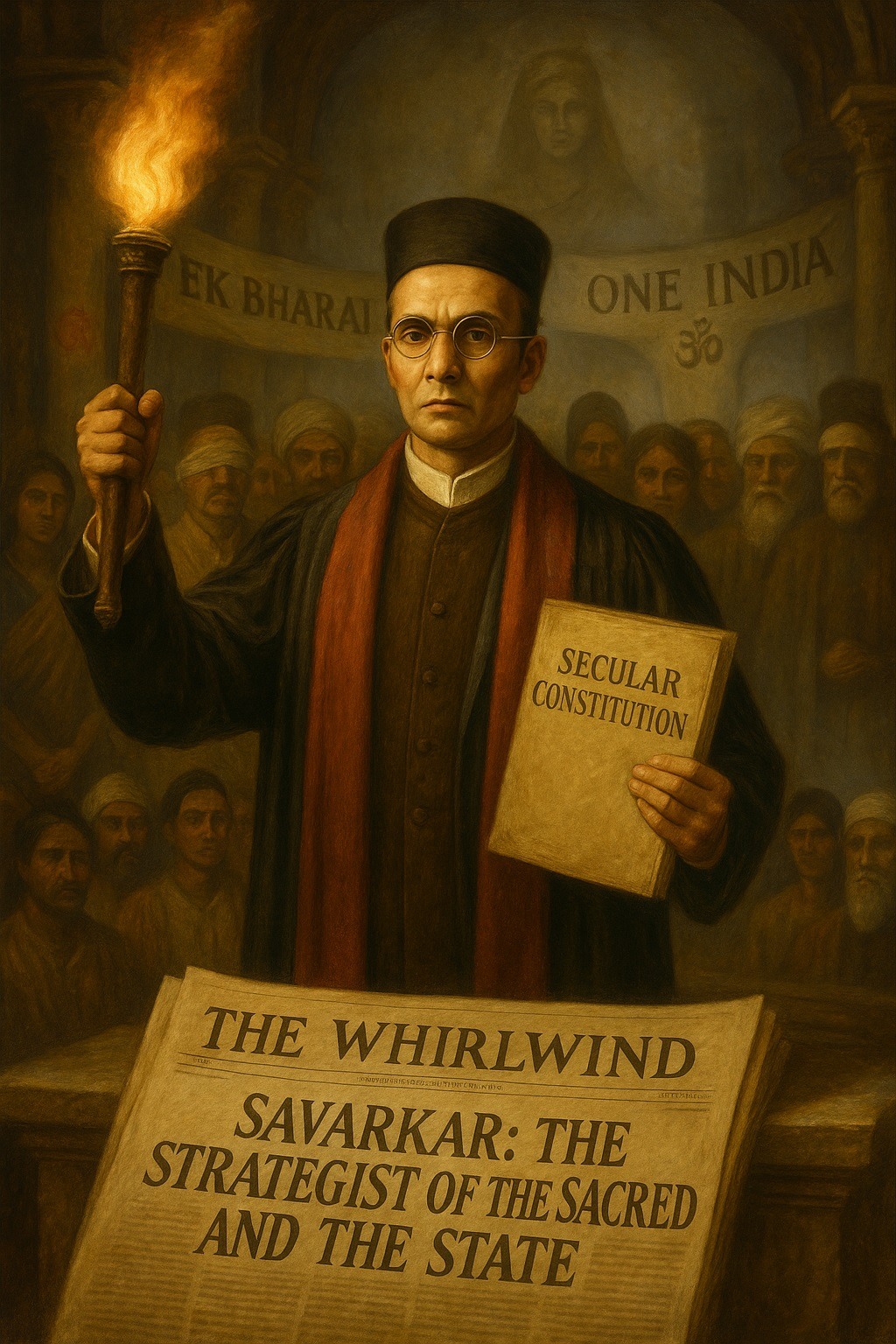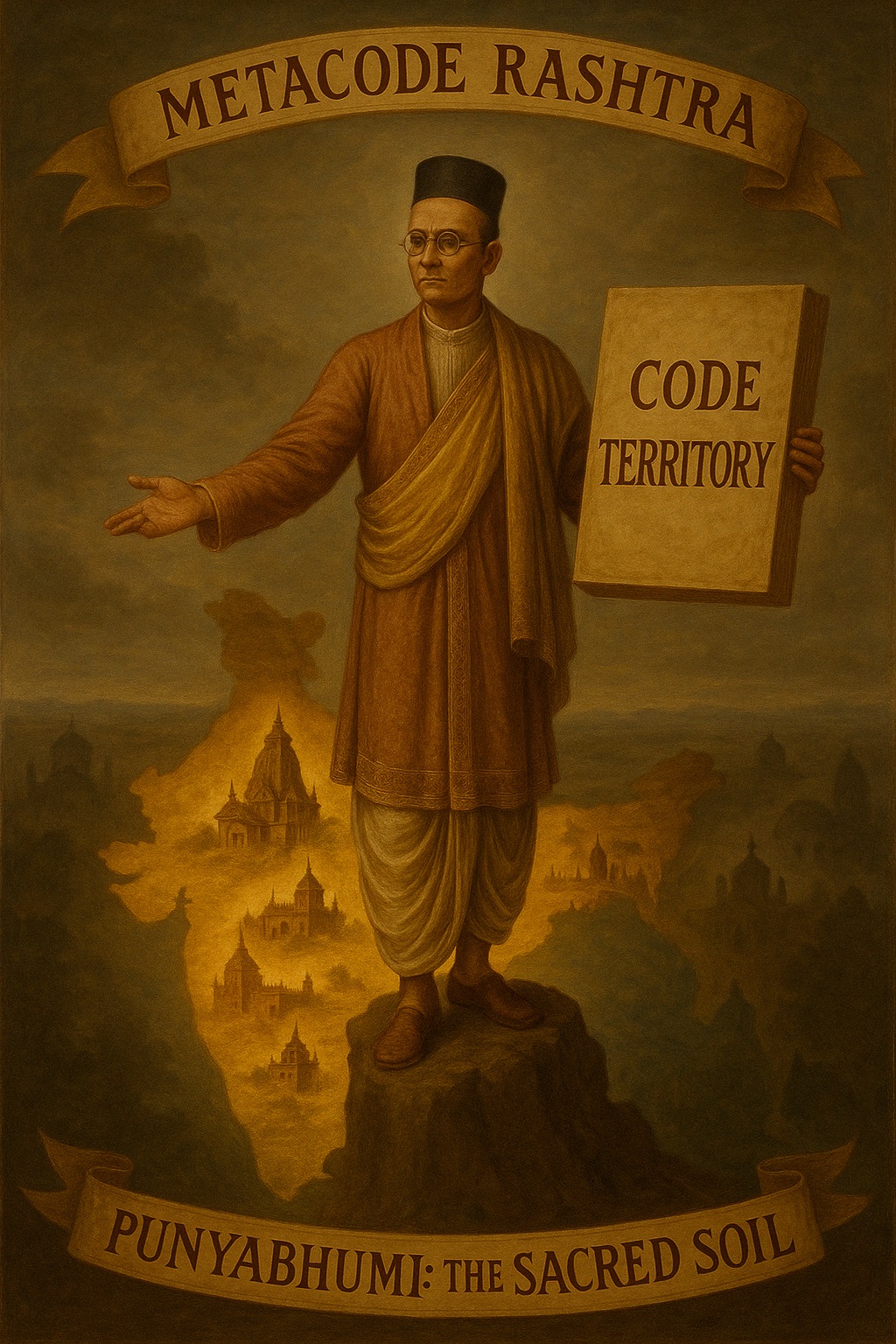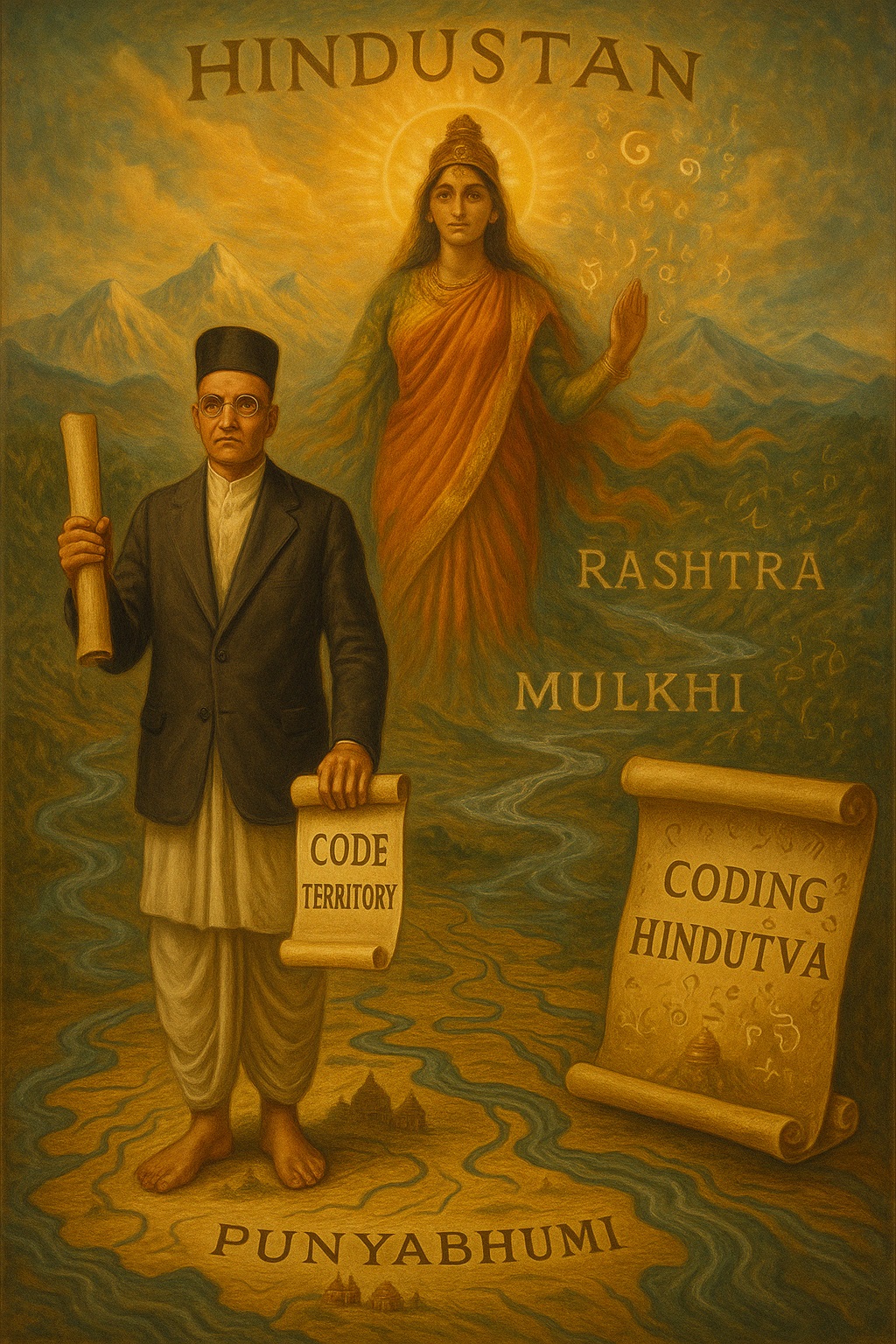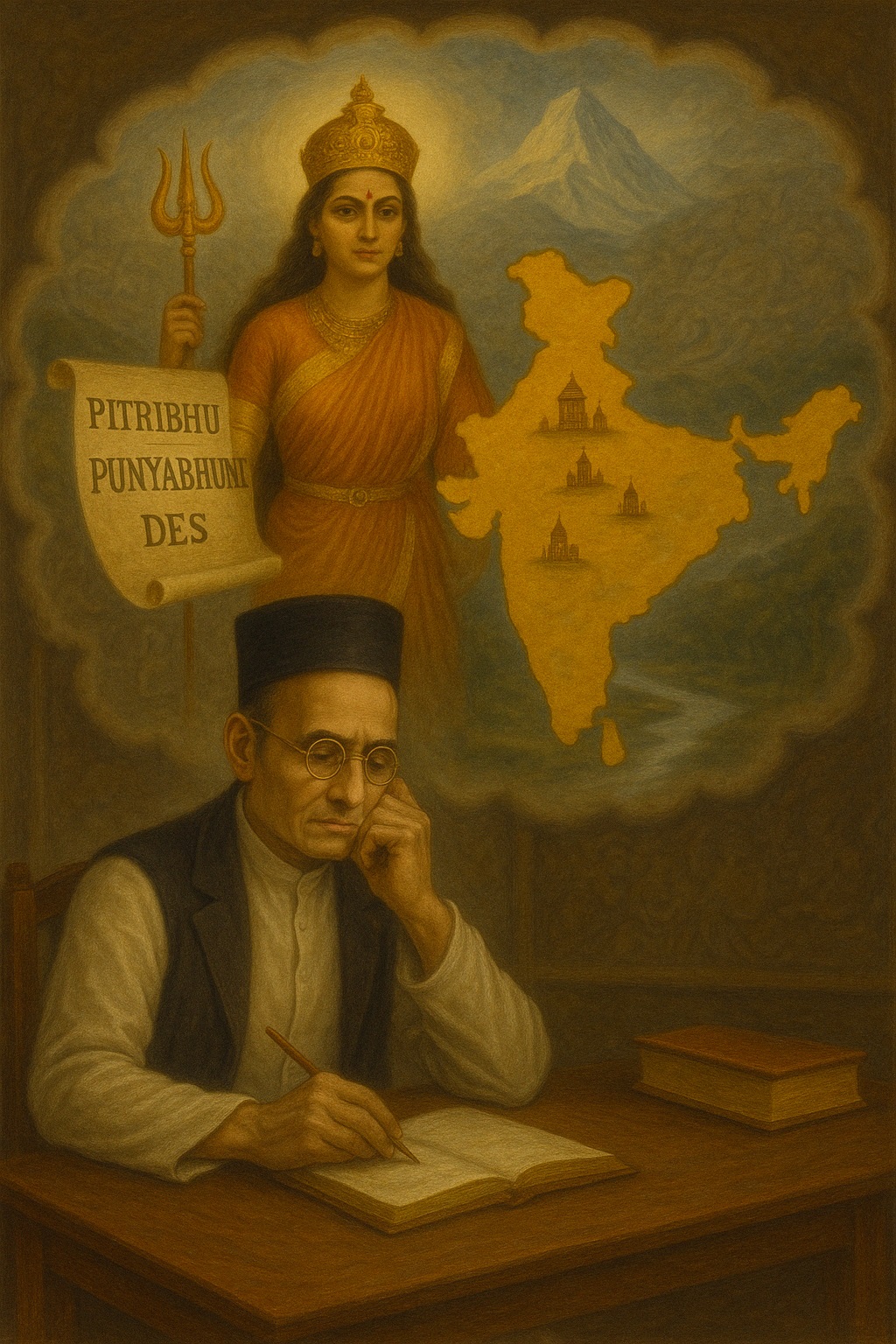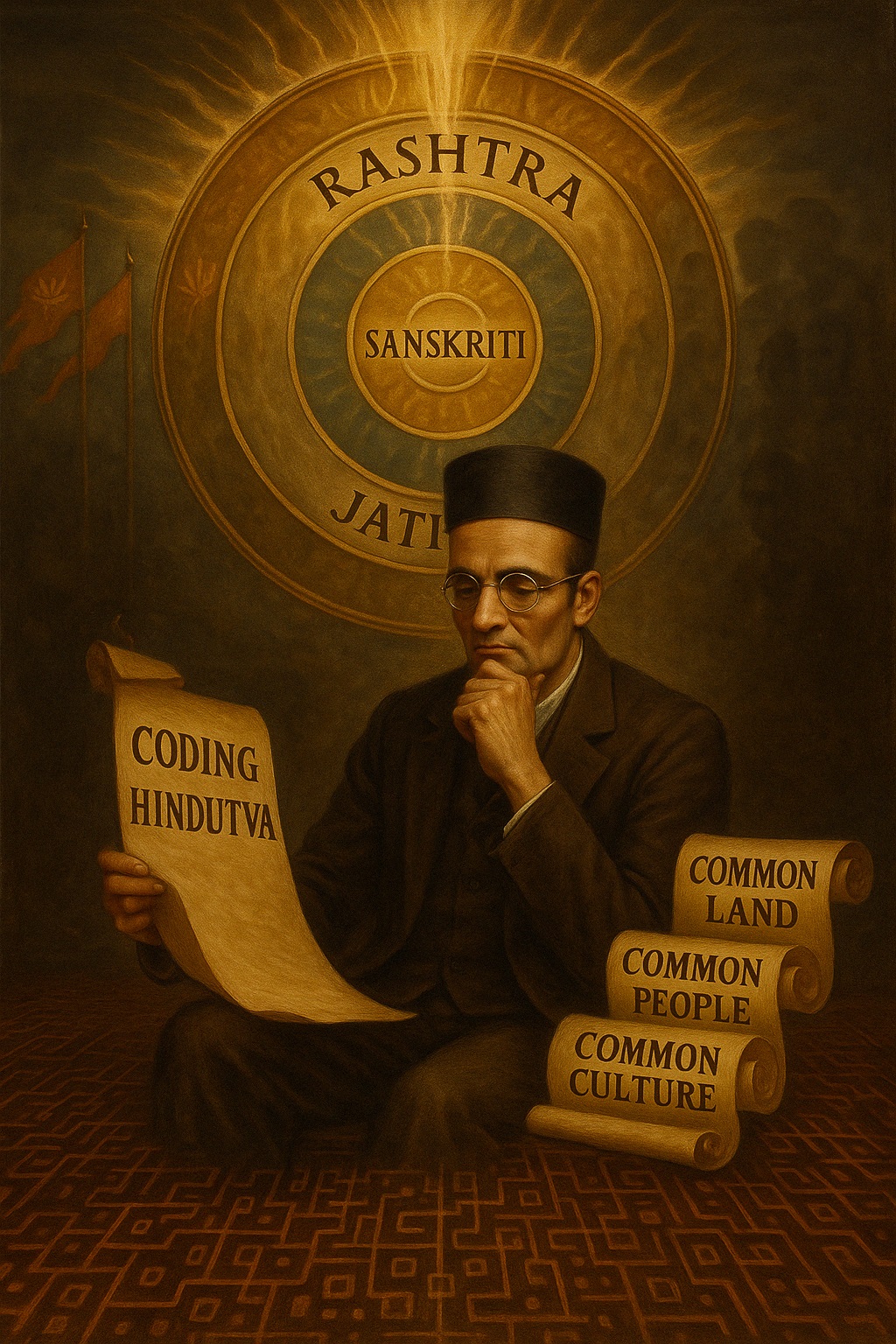Tag: Rashtra
-
Every year, 7 September is observed as Vande Mataram Day, commemorating the pivotal role of this iconic song in India’s struggle for independence. The date recalls the decision of the Indian National Congress (INC) in 1905 to adopt Vande Mataram at the height of the Swadeshi Movement against the Partition of Bengal. More than a…
-
Savarkar’s coding of Hindutva; Metacode Rashtra, Part 4; Code Territory (3/6) The concept of Punyabhumi, or “sacred land”, is central to Vinayak Damodar Savarkar’s definition of the Hindu Rashtra. While he acknowledges the geographical and territorial aspect of the nation (Pitribhu), he further elevates it by embedding a religious dimension, defining it as a “sacred…
-
Savarkar’s Coding of Hindutva, Metacode Rashtra, Part 3; Code Territory (2/6) Vinayak Damodar Savarkar’s ideological framework for Hindutva is deeply rooted in territorial delineation, a concept that is essential for political realism while seemingly contradictory to his broader worldview. His reflections on the nature of the Indian nation and its territorial boundaries stem from a…
-
Savarkar’s Coding of Hindutva; Metacode Rashtra, Part 2 ; Code Territory (1/6) In the complex tapestry of Hindutva, the concept of Rashtra, the shared land, more specifically the Code Territory, plays a pivotal role. It’s more than just a map; it’s the foundation upon which the idea of a unified Hindu identity is built. To…
-
Savarkar’s Coding of Hindutva; Metacode Rashtra, Part 1 The concept of Hindutva is deeply intertwined with geography, history, and a unique cultural identity. At its core, the idea of Rashtra – the first Metacode – serves as the constitutive element of the “common land.” This Metacode not only defines the territorial framework of Hindutva but…


